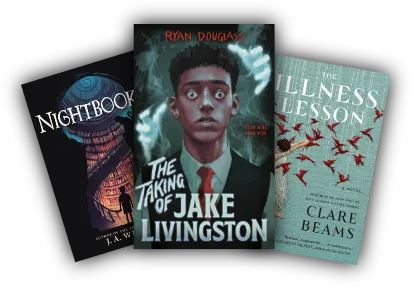How To Write A Book Review On A Self Help Books

Self-help books are everywhere—from personal productivity and financial freedom to emotional healing and spiritual growth. But how do you write a meaningful book review that does more than just say, “It was good” or “It wasn’t for me”?
Writing a compelling book review for a self-help book involves more than summarizing chapters. It’s about sharing your personal takeaways, assessing the effectiveness of the advice, and helping other readers decide whether the book is worth their time.
In this blog, we’ll break down the process of writing a helpful, thoughtful, and engaging self-help book review. Whether you’re posting it on Goodreads, Amazon, or your blog, this guide will give your review structure, substance, and personality.
Table of Contents
ToggleWhy Write a Review on a Self-Help Book?
Before diving into the how, let’s understand the why:
- Help fellow readers make informed choices.
- Reflect on what you learned and how it impacted your life.
- Support authors by providing constructive feedback.
- Build credibility if you’re a blogger, coach, or book influencer.
Self-help books are deeply personal. A review allows you to connect with other readers through shared experiences or different perspectives.
Step 1: Read With Intention
Writing a good review starts with how you read the book. Self-help books often include exercises, frameworks, and personal stories. Pay attention to:
- Main ideas and key principles
- Structure and clarity of content
- Practical advice vs. theory
- Personal resonance: What parts spoke to you? What felt irrelevant?
- Author’s tone and credibility
Tip: Keep a notebook or use digital highlights to mark quotes, key insights, and moments where the book made you stop and reflect.
Step 2: Start with a Strong Hook
Your first sentence should grab attention. Instead of starting with “This is a book about…”, try:
- A compelling quote from the book
- A personal anecdote that relates to the book’s theme
- A bold statement or question: “Can one book really change your life? After reading Atomic Habits, I believe it can.”
Make it personal, punchy, and relevant.
Step 3: Provide a Brief Summary (Without Spoilers)
Every book review needs context. Give a short, spoiler-free summary of the book. Focus on:
- What the book is about
- The problem it claims to solve
- Its central message or premise
Example:
“In The Subtle Art of Not Giving a Fck*, Mark Manson challenges the toxic positivity of self-help culture and urges readers to embrace discomfort as a path to growth.”
Avoid rehashing every chapter. Readers want the essence, not a table of contents.
Step 4: Analyze the Book’s Content and Approach
This is the heart of your review. Ask yourself:
Is the advice practical or overly idealistic?
Some self-help books are rooted in real-world experiences, while others may sound good on paper but are hard to implement.
Does the author walk the talk?
Review whether the author lives by their own philosophy or simply dishes out advice. Include how the book made you feel, not just what it said.
Are the tools and frameworks effective?
Evaluate if the book offers concrete tools, exercises, or actionable steps—or just motivational fluff.
Is the writing style engaging?
Some self-help books are filled with technical jargon, while others read like a conversation with a wise friend. Describe how readable and engaging the book was.
Step 5: Share Personal Takeaways
Self-help books aim to change behavior, mindset, or life direction. So share:
- What you learned
- What you tried and how it worked (or didn’t)
- If your mindset shifted after reading the book
- If the book encouraged you to take action
This part makes your review authentic and relatable. Readers want to know how the book made a difference in a real person’s life.
Example:
“After finishing Deep Work, I started turning off my phone for 90-minute blocks during the day. My focus and productivity have skyrocketed.”
Step 6: Point Out the Pros and Cons
Balance is key. Even the best books have flaws. Be honest, but respectful.
Pros could include:
- Clear, concise writing
- Actionable steps and exercises
- Authentic personal stories
- Fresh perspective on an old problem
Cons might be:
- Repetitive chapters
- Overly simplistic solutions
- Lack of scientific backing
- Unrealistic advice for certain audiences
Tip: Avoid personal attacks on the author. Critique the ideas, not the individual.
Step 7: Who Should Read This Book?
Help your audience understand if the book is right for them. Consider mentioning:
- Beginner vs. advanced readers
- Age group or life stage
- People facing specific challenges (e.g., anxiety, time management, career changes)
Example:
“This book is perfect for people in their 20s struggling to find direction, but it may feel too basic for seasoned entrepreneurs.”
This helps guide readers to the right books—and avoid the wrong ones.
Step 8: Give It a Rating (Optional)
Most platforms let you rate the book from 1 to 5 stars. Be clear about why you gave that rating.
Example:
⭐️⭐️⭐️⭐️⭐️ “Five stars for its life-changing exercises and relatable tone. A must-read for anyone feeling stuck.”
Or,
⭐️⭐️⭐️ “The book started strong but lost momentum halfway through. Some good ideas, but not enough depth for me.”
Step 9: End With a Memorable Closing
Wrap up your review with:
- A final verdict
- Who you’d recommend it to
- A personal note or reflection
Example:
“If you’re tired of overcomplicated advice and want a straight-shooting guide to get your life in order, this book might be your breakthrough. It certainly was mine.”
Extra Tips for Writing Great Reviews
- Be concise but thorough. Aim for 500–1000 words depending on platform.
- Avoid spoilers of major exercises or unique approaches.
- Use bullet points for readability.
- Write in your voice. Formal or informal, be authentic.
- Don’t compare too much. Mention similar books, but avoid reducing your review to “It’s just like X.”
Example Template: Self-Help Book Review Structure
Here’s a basic outline you can follow:
- Hook – Grab the reader’s attention with a personal story or quote.
2. Summary – Brief overview of what the book is about.
3. Main Ideas – Highlight core principles or frameworks.
4. Analysis – Evaluate writing, structure, effectiveness.
5. Personal Takeaways – Share how the book helped or changed you.
6. Pros & Cons – Balanced critique.
7. Recommendation – Who should (or shouldn’t) read it.
8. Final Verdict – Conclude with a rating and final thoughts.
Final Thoughts
Writing a book review on a self-help book is a powerful way to engage with the content more deeply, reflect on its relevance to your life, and offer guidance to others navigating their personal journeys.
Remember, a great review isn’t just about whether the book was “good” or “bad”—it’s about your experience, your insights, and your honest reflection. That’s what truly resonates with readers.

